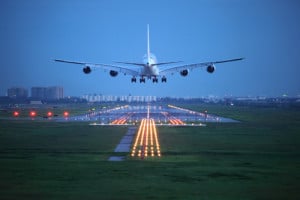
IoT deployments are bringing new efficiencies to the civil aviation industry, especially the aircraft maintenance, repair, and overhaul (MRO) space.
Much speculation has gone into the importance and benefits of the Internet of Things (IoT) and how it can impact how we live and work. As the debate rages on regarding IoT’s potential impact, various industries have already seen many opportunities with the IoT.
Civil aviation for one has positively benefited from the application of the IoT. IoT maximizes efficiency across the industry; from organizing tools to machines and people. And with an industry as asset-intensive as civil aviation, there’s no doubt that the IoT will continue to benefit the civil aviation industry.
See also: A better journey — using IoT in smart transportation systems
One of the key ways to understand just how the IoT is augmenting the civil aviation industry is by examining its impact on the Maintenance, Repair, and Overhaul (MRO) industry. The inclusion of the IoT to aspects of the MRO industry has created improvements in operational efficiency, proficiency, and profitability. It has also optimized time to market and customer delivery.
But just how much of a game changer is the IoT? Here, we look at three ways that the IoT is transforming the aircraft MRO industry.
#1: Fewer Maintenance Delays
With annual air traffic booming, growth in demand continues to rise; particularly in the Middle East and North Africa and Asia-Pacific regions. This will drive an increased demand for the use of IoT to provide improvements in the utilization and analysis of big data. Employing big data from IoT-enabled sensors enhances and streamlines condition-based maintenance (CBM).
This, in turn, will augment aircraft fleet availability, reliability, and safety. The use of CBM within the MRO industry can provide actionable information to allow for better-informed maintenance decisions.
Aircraft maintenance companies in the UAE use IoT smart sensors and data analytics to enable greater efficiency and less downtime for aircraft fleets. The ability to gain insight from IoT sensors means problems are more readily detectable. Gaining the insight on faults and problems before they become major results in fewer maintenance delays and improves overall operational and flight safety.
“Aircraft on Ground” (AOG) time is a crucial factor. Every second a civil aircraft is not flying, fleets and airlines are losing money. The use of IoT data ensures no fleet is grounded for a significant period of time.
#2: The Rise of Wearables
The adoption of connected wearable technologies may be a by-product of the rise of IoT but serves an important purpose nonetheless.
The inclusion of IoT and big data analysis means wearable technology has become a necessary tool in the modern MRO industry. With an unprecedented number of aircrafts in service today, routine maintenance and service have become more challenging. There are evolving markets and extensive regulatory frameworks as well as passenger safety and profit margins to consider.
Wearable technology ensures MRO services evolves with market trends and industry regulations. It allows MROs to continue serving airlines by meeting their global needs and keeping them profitable. Wearable tech drives maintenance innovation to improve efficiency, facilitate connectivity, and perform repairs safely and in a timely manner.
Today’s practical applications include wearable technology like Google Glass or Pebble Watch. Such advancements in technology ensure technicians, mechanics, and engineering teams have access to IoT data and information previously inaccessible on site. Deployment of such technologies provides more immediate responses to critical issues encountered by aircrafts.
#3: IoT Prepares Workers for the Future
The introduction of new technologies and the digitization of services means big benefits for airlines and the MRO industry. The growth and demand of civil aviation in regions like Asia-Pacific means a rapid expansion of global air passengers. In fact, Airbus has predicted that the expansive growth in global air passengers will result in “33,000 new aircraft globally by 2035.”
But, qualified maintenance technicians are few and far between. And this can pose a significant problem to the current boom in civil aviation.
It takes nearly 10 years to train a qualified and experienced maintenance worker. This is in part to indigenous training capabilities and stringent training tests. These rigorous training methodologies mean that airline and MRO operators face a shortage of fully licensed maintenance technicians.
The IoT has already implemented innovative solutions to tackle such problems. Augmented reality (AR) has become a solution that has emerged to fill the gap within the MRO industry. XMReality is one company that has revolutionized knowledge sharing through the IoT.
Their usage of AR as a remote guidance solution means onsite operators can be connected to licensed technical experts from anywhere in the world. This real-time, cost-effective solution, provides expertise from any remote location, bridging the shortage of available technicians allowing for multinational line maintenance teams.
AR has proven to improve the utilization and allocation of necessary service personnel, increase field service quality, and decrease operational costs.
Research and advisory company Gartner forecasts that the connectivity of IoT will reach 20.4 billion connected things by 2020. This rapid growth of connectivity has already shown its merit and benefits within the airline industry, particularly to MRO operators. The proliferation of technology-driven advancements continues to improve overall functionality and greater efficiency within the MRO industry.
The continued progression and implementation of IoT is transforming the aircraft MRO industry, providing access to once limited data information, innovative solutions, and enabling insightful maintenance data that decrease operational costs, unlocks new revenue streams, and improves AOG time.




























